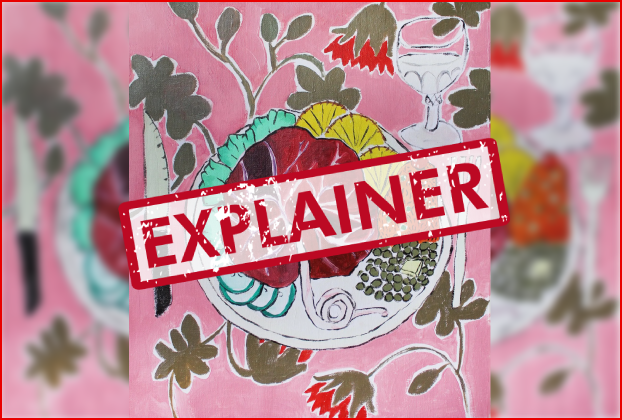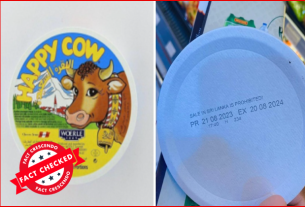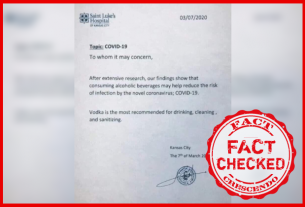
Trigger Warning: Disturbing Content
Please be advised that this article contains information about Placentophagy, which may include disturbing visuals related to placenta consumption. If you are sensitive to graphic content or feel uncomfortable with the topic, please proceed with caution or refrain from reading.
TikTok has become a popular platform for creating and sharing viral trends. The platform has given rise to numerous trends, ranging from dance challenges to viral memes, and has even popularized new food trends such as “cloud bread” and “whipped coffee.” With over one billion active users, TikTok has the power to launch a trend in a matter of hours, and Placentophagy is no exception.
As more and more women share their experiences with consuming their placenta on the platform, the trend has gained momentum and sparked both curiosity and controversy. Here is our report on this topic.
A viral tweet recently shared about a trend on TikTok. The Twitter user expressed surprise upon learning about the trend, and the tweet has gained over 2.6 million views with diverse opinions in the replies section.

Tweet Translation: TikTok has once again opened my eyes to the world. Today, I learned that some mothers eat their own placenta and even blend it with fruits into a smoothie. Is it really edible? After searching the tag, I found that many people are indeed consuming it. Is it safe for human consumption?
After seeing this tweet, we looked into it and found many TikTok videos featuring the trend, some of which have thousands of shares and views. Here is an example of a video claiming that consuming the placenta can provide health benefits.
As this trend is gaining momentum, we decided to dive deeper into this matter.
What is Placentophagy?
Consuming the placenta after childbirth, known as “Placentophagy,” has recently gained popularity. Advocates of placenta consumption claim that it can provide various health benefits, including reducing postpartum depression, increasing breast milk production, and improving energy levels.
The placenta is an organ that develops during pregnancy to provide nutrients and oxygen to the developing fetus. It is usually expelled from the mother’s body after childbirth. In some cultures, the placenta is traditionally seen as a sacred organ and is treated respectfully.
In addition, some believe that consuming the placenta can help the mother recover from childbirth and provide essential nutrients to the body. However, the scientific evidence for these claims needs to be more comprehensive and conclusive.
Placentophagy can be done in various ways, such as consuming the placenta raw, cooked, or turned into capsules or a tincture. Some people mix the placenta with fruits or vegetables to make a smoothie, while others prefer to have it encapsulated by drying it, grinding it into powder, and filling capsules with the powder.
What does science say about this trend?
Although the video mentioned that placenta consumption is common in many countries outside the US, there is limited scientific evidence on its effects on humans. According to PlacentaRisks, A study of cultures around the world didn’t find any tradition of mothers eating their placenta after giving birth.
The trend of human placenta ingestion began in the 1970s. Most studies on the topic have been conducted on animals, and the results have been mixed. Some studies suggest that consuming the placenta can provide health benefits, while others have found no significant difference between consuming the placenta and not consuming it.
For example, the article “Placentophagy’s Effects on Mood, Bonding, and Fatigue: A Pilot Trial, Part 1” aimed to investigate the effects of placenta consumption on postpartum mood, bonding, and fatigue, recruited 27 women who consumed encapsulated placenta and 12 who did not. The study results showed no significant difference between the two groups regarding mood, bonding, and fatigue.
While some women may believe that consuming the placenta can provide health benefits, healthcare providers caution that there is no scientific evidence to support these claims and that consuming the placenta may pose health risks.
According to Dr. Mary Marnach from the Mayo Clinic, consuming the placenta carries a risk of infection due to potentially harmful bacteria. This could lead to illness. There is also a risk that consuming the placenta could interfere with breastfeeding, as it may contain hormones that affect milk production. Dr. Marnach also notes the lack of regulation in preparing and consuming placenta products, which could lead to other health risks.
Furthermore, a review by Northwestern University found that eating the placenta does not provide any health benefits for mothers. Besides, many more studies advise against this practice. Read the studies here, here, and here.
In sum, while Placentophagy has become popular on TikTok and among some groups, there isn’t much scientific evidence to prove the claims of health advantages linked to the practice. Eating the placenta could be dangerous for your health, including the danger of infection and problems with breastfeeding, and there are no rules for preparing and eating placenta products. It’s important for women to be careful when it comes to Placentophagy and to speak with their doctor before considering the practice.

Title:TikTok Trend Check: Can Consuming Your Placenta Really Provide Health Benefits?
By: Fact Crescendo TeamResult: Explainer





